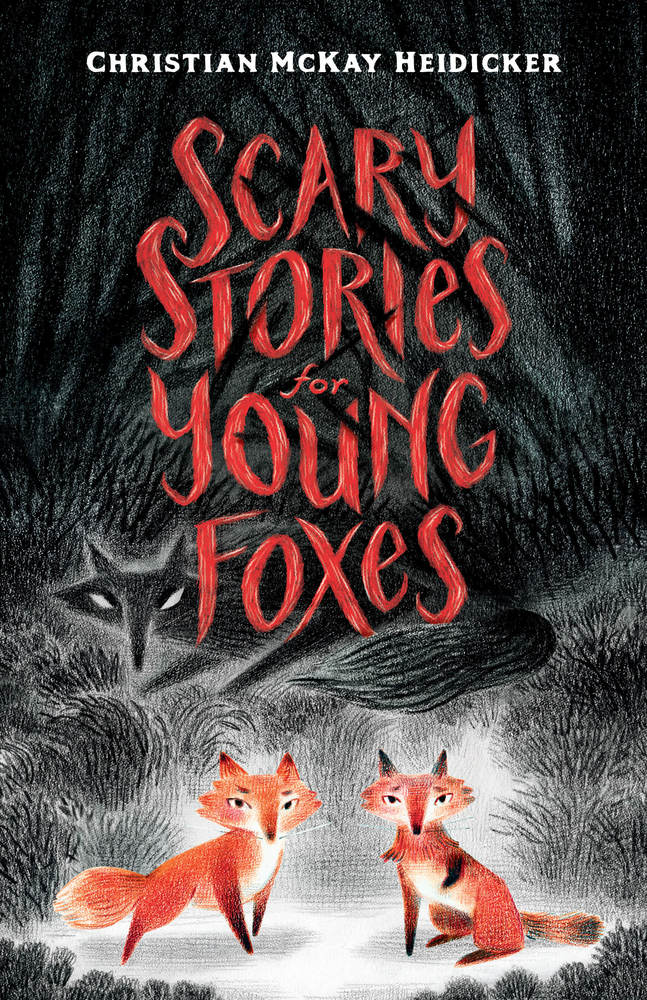A kit is a baby fox. Prior to reading Scary Stories for Young Foxes I didn’t know that. It didn’t take me long to realize the horror, love and adventure that they could encounter. Scary Stories for Young Foxes gets so many things absolutely right about what makes a great book work it’s, well…scary. While reading the book it was so easy to imagine myself transforming into a creature to no bigger than a house cat. But the world that I’d encounter in that body is far more treacherous then you’d want it to be.

From the grub beetles to the centipedes and an unflinching eye towards what really happens in nature this book will leave readers in middle school and up breathless. Author Christian McKay Heidicker wrote the book as an anthology. Initially I thought this was like a Seinfeld episode, in that it ends where it started, but I was incorrect on that point.
Instead, this is a collection of short stories about a mother fox, her kits and the other animals that live in the forest. The narrator of the book is clearly spelled out on black pages. Seven kits ask their mother for a scary story and she doesn’t have one. She clearly asks the kits not to go to woods and find Bog Cavern, where there’s a storyteller who has the scariest stories of all. Of course, kits are kids and kids are kids, they might not listen at times and our fox adolescents discover a being who can tell a toe-curler of a scary story.
This is the fun kind of scary that has a couple of instances of real-world consequences. It all but shrinks readers down to fox-size and puts you in their tiny, pads as they try not to get eaten by gators, owls, badgers, family members or other foxes. It’s a whole new world when you’re a fox and this book goes straight up undercover, putting you down to their size level. And, if you take their dialogue in the book at face value, their world and their relationships are a lot like ours.
Your teacher has your best interests at heart. Sometimes your siblings are jerks, but they’re still your siblings. The urban legends that you hear might not be 100% accurate, but the lessons they’re trying to teach are still valid. There’s adventure and danger everywhere, so be careful and always try to do the right thing.
All of the aforementioned things rear their head in one form or fashion. I’ve seen other comments that compare Scary Stories for Young Foxes to Watership Down. From what I remember about that book this an apt relationship. Scary Stories, when the narrator isn’t speaking, feels like a horror book aimed at middle school students or naturalists. And then, just when the pain or gruesomeness can’t be tolerated anymore we check back in with the narrator who assures the younger audiences that it’s just a story.
What if The Lord of the Rings had a narrator and was compressed by 15%? The narrator would come in just when Golem gets too freaky or the Eye of Sauron started to gaze at you. The breaking of the tension, in the case of Scary Stories for Young Foxes adds to the overall story, gives younger audiences cover when they get spooked and gives them another great example of this technique, other than The Princess Bride.
That break, the two or four page interlude in the action is just what some readers will need. Our 10 year-old for example, is able to read the book and loves animals, but might find the intensity of the book a little too much; were it not for the presence of the narrator.
Scary Stories for Young Foxes brings the creepy factor to middle grade readers. This is the book they will read, pass around to their friends and will make them think of the forest-and foxes in an entirely different light.
There are affiliate links in this post, because, foxes.




 Facebook
Facebook Twitter
Twitter Flickr
Flickr GooglePlus
GooglePlus Youtube
Youtube